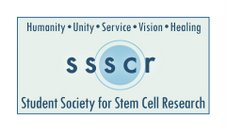June 4 2009
Please help us make Nature Reports Stem Cells more useful to you. Take our brief survey:
http://links.ealert.nature.com/ctt?kn=51&m=33355974&r=MTc2NjM3NTc5MQS2&b=2&j=NTA4Mzk4OTkS1&mt=1&rt=0
----------------------
OUR TOP STORIES
----------------------
Diabetes stem-cell treatment looks to cell capsules
Finding the right way to protect cells, and intellectual property, will be key for getting cell therapy to patients
http://links.ealert.nature.com/ctt?kn=33&m=33355974&r=MTc2NjM3NTc5MQS2&b=2&j=NTA4Mzk4OTkS1&mt=1&rt=0
Elaine Fuchs: secrets of skin renewal
Skin stem cells are constantly replacing and repairing the body's surface. Fuchs says figuring out how this happens is a delight
http://links.ealert.nature.com/ctt?kn=30&m=33355974&r=MTc2NjM3NTc5MQS2&b=2&j=NTA4Mzk4OTkS1&mt=1&rt=0
Editorial: Stem-cell clarity needed from NIH
The draft NIH guidelines on stem-cell research are a good first step, but some revision is needed
http://links.ealert.nature.com/ctt?kn=52&m=33355974&r=MTc2NjM3NTc5MQS2&b=2&j=NTA4Mzk4OTkS1&mt=1&rt=0
Related articles:
Draft stem-cell guidelines criticized
http://links.ealert.nature.com/ctt?kn=27&m=33355974&r=MTc2NjM3NTc5MQS2&b=2&j=NTA4Mzk4OTkS1&mt=1&rt=0
The Niche: Stem cell guidelines need input, not hysteria
http://links.ealert.nature.com/ctt?kn=44&m=33355974&r=MTc2NjM3NTc5MQS2&b=2&j=NTA4Mzk4OTkS1&mt=1&rt=0
Stem-cell therapy faces more scrutiny in China
But regulations remain unclear for companies that supply treatments
http://links.ealert.nature.com/ctt?kn=7&m=33355974&r=MTc2NjM3NTc5MQS2&b=2&j=NTA4Mzk4OTkS1&mt=1&rt=0
-----------------------------------------
CORRESPONDENCE
------------------------------------------
This letter on The Niche, from PrimeGen's Fari Izadyar, responds to comments made about PrimeGen by former executive Francisco Silva in a recent article in Nature Reports Stem Cells.
http://links.ealert.nature.com/ctt?kn=13&m=33355974&r=MTc2NjM3NTc5MQS2&b=2&j=NTA4Mzk4OTkS1&mt=1&rt=0
This letter on The Niche, from University of Tokyo's Hisashi Moriguchi, responds to a recent news feature in Nature describing the scientific race for the assessment and production of induced pluripotent stem cells.
http://links.ealert.nature.com/ctt?kn=3&m=33355974&r=MTc2NjM3NTc5MQS2&b=2&j=NTA4Mzk4OTkS1&mt=1&rt=0
-----------------------------------------
RESEARCH HIGHLIGHTS AND NEWS STORIES ABOUT RECENT PUBLICATIONS
-----------------------------------------
Beating heart triggers blood stem cells in the embryo
Embryonic haematopoiesis needs flow, nitric oxide signalling
North, T. E. et al. Cell 137, 736-748 (2009).
Adamo L. et al. Nature advance online publication, doi:10.1038/nature08073 (13 May 2009).
http://links.ealert.nature.com/ctt?kn=25&m=33355974&r=MTc2NjM3NTc5MQS2&b=2&j=NTA4Mzk4OTkS1&mt=1&rt=0
MicroRNA a major pluripotency repressor
miRNA-145 represses Klf4, Oct4 and Sox2, and is repressed by Oct4
Xu, N., Papagiannakopoulos, T., Pan, G., Thomson, J. A. & Kosik, K. S. Cell doi:10.1016/j.cell.2009.02.038 (published online 30 April 2009).
http://links.ealert.nature.com/ctt?kn=14&m=33355974&r=MTc2NjM3NTc5MQS2&b=2&j=NTA4Mzk4OTkS1&mt=1&rt=0
Embryos donated for research likely have chromosomal abnormalities
Single-cell genetic analysis on embryos generated by IVF finds surprisingly high rates of rearrangements
Vanneste, E. et al. Nature Med. advance online publication, doi:10.1038/nm.1924 (26 April 2009).
http://links.ealert.nature.com/ctt?kn=35&m=33355974&r=MTc2NjM3NTc5MQS2&b=2&j=NTA4Mzk4OTkS1&mt=1&rt=0
New types of embryonic stem cells generated by stabilizing pluripotency
Molecules that replace, sustain pluripotency factors make "non-permissive" mouse strains yield stable embryonic stem cells
Hanna, J. et al. Cell Stem Cell doi:10.1016/j.stem.2009.04.015 (published online 7 May 2009).
Lyssiotis, C. A. et al. Proc. Natl. Acad. Sci. USA doi:10.1073/pnas.0903860106 (15 May 2009).
http://links.ealert.nature.com/ctt?kn=34&m=33355974&r=MTc2NjM3NTc5MQS2&b=2&j=NTA4Mzk4OTkS1&mt=1&rt=0
Hints to making sperm in a dish
An in vivo study suggests that heterogeneous cell cultures block desired differentiation
Ohinata, Y. et al. Cell doi:10.1016/j.cell.2009.03.014 (published online 1 May 2009).
http://links.ealert.nature.com/ctt?kn=47&m=33355974&r=MTc2NjM3NTc5MQS2&b=2&j=NTA4Mzk4OTkS1&mt=1&rt=0
A wicked gene shrinks numbers of germline stem cells
Ribosome biogenesis regulates asymmetric growth and self-renewal of these cells in Drosophila
Fichelson, P. et al. Nature Cell Biol. advance online publication, doi:10.1038/ncb1874 (10 May 2009).
http://links.ealert.nature.com/ctt?kn=24&m=33355974&r=MTc2NjM3NTc5MQS2&b=2&j=NTA4Mzk4OTkS1&mt=1&rt=0
Stem-cell therapies closer to the clinic
Human induced pluripotent stem cells made without addition of genes
Zhou, H. et al. Cell Stem Cell 4, 381-384 (2009).
http://links.ealert.nature.com/ctt?kn=37&m=33355974&r=MTc2NjM3NTc5MQS2&b=2&j=NTA4Mzk4OTkS1&mt=1&rt=0
Related articles:
The Niche: Gene-free reprogramming in human cells
http://links.ealert.nature.com/ctt?kn=6&m=33355974&r=MTc2NjM3NTc5MQS2&b=2&j=NTA4Mzk4OTkS1&mt=1&rt=0
The Niche: Creation of iPS pig cells could bring on humanized porkers
New cells could lead to humanized organs, healthier meat
Wu, Z. et al. J. Mol. Cell Biol. doi:10.1093/jmcb/mjp003 (3 June 2009).
http://links.ealert.nature.com/ctt?kn=9&m=33355974&r=MTc2NjM3NTc5MQS2&b=2&j=NTA4Mzk4OTkS1&mt=1&rt=0
The Niche: Gene therapy combined with reprogramming makes disease-free cells
Cells containing mutations for Fanconi anaemia can be repaired and reprogrammed
Reya, A. et al. Nature advance online publication, doi:10.1038/nature08129 (31 May 2009).
http://links.ealert.nature.com/ctt?kn=16&m=33355974&r=MTc2NjM3NTc5MQS2&b=2&j=NTA4Mzk4OTkS1&mt=1&rt=0
Bone marrow therapy may help treat chronic heart disease
Bone marrow cells injected directly into patients' heart muscles result in better blood flow and function
van Ramshorst, J. et al. JAMA 301, 1997-2004 (2009).
http://links.ealert.nature.com/ctt?kn=21&m=33355974&r=MTc2NjM3NTc5MQS2&b=2&j=NTA4Mzk4OTkS1&mt=1&rt=0
Why people with Down's syndrome get fewer cancers
iPS cells from patients reveal that an extra gene cuts the growth of blood vessels that feed tumours
Baek, K.-H. et al. Nature advance online publication doi:10.1038/nature08062 (20 May 2009).
http://links.ealert.nature.com/ctt?kn=32&m=33355974&r=MTc2NjM3NTc5MQS2&b=2&j=NTA4Mzk4OTkS1&mt=1&rt=0
Got an opinion to share? Let us know at theniche@nature.com
Nature Reports Stem Cells is an interactive forum for stem cell scientists and other stakeholders to communicate about the research, policy, ethics, business and medicine of stem cell science. And it's all free!
=====================================================================
You have been sent this Table of Contents Alert because you have opted in to receive it. You can change or discontinue your e-mail alerts at any time, by modifying your preferences on your nature.com account at:
http://links.ealert.nature.com/ctt?kn=38&m=33355974&r=MTc2NjM3NTc5MQS2&b=2&j=NTA4Mzk4OTkS1&mt=1&rt=0
(You will need to log in to be recognised as a nature.com registrant).
Comment on this site:
mailto:theniche@nature.com
For further technical assistance, please contact our registration department: registration@nature.com
For other enquiries, please contact our customer feedback department: feedback@nature.com
Nature Publishing Group | 75 Varick Street, 9th Floor | New York | NY 10013-1917 | USA
Nature Publishing Group's worldwide offices:
London - Paris - Munich - New Delhi - Tokyo - Melbourne -
San Diego - San Francisco - Washington - New York - Boston
(c) Copyright 2009 Nature Publishing Group
=====================================================================










